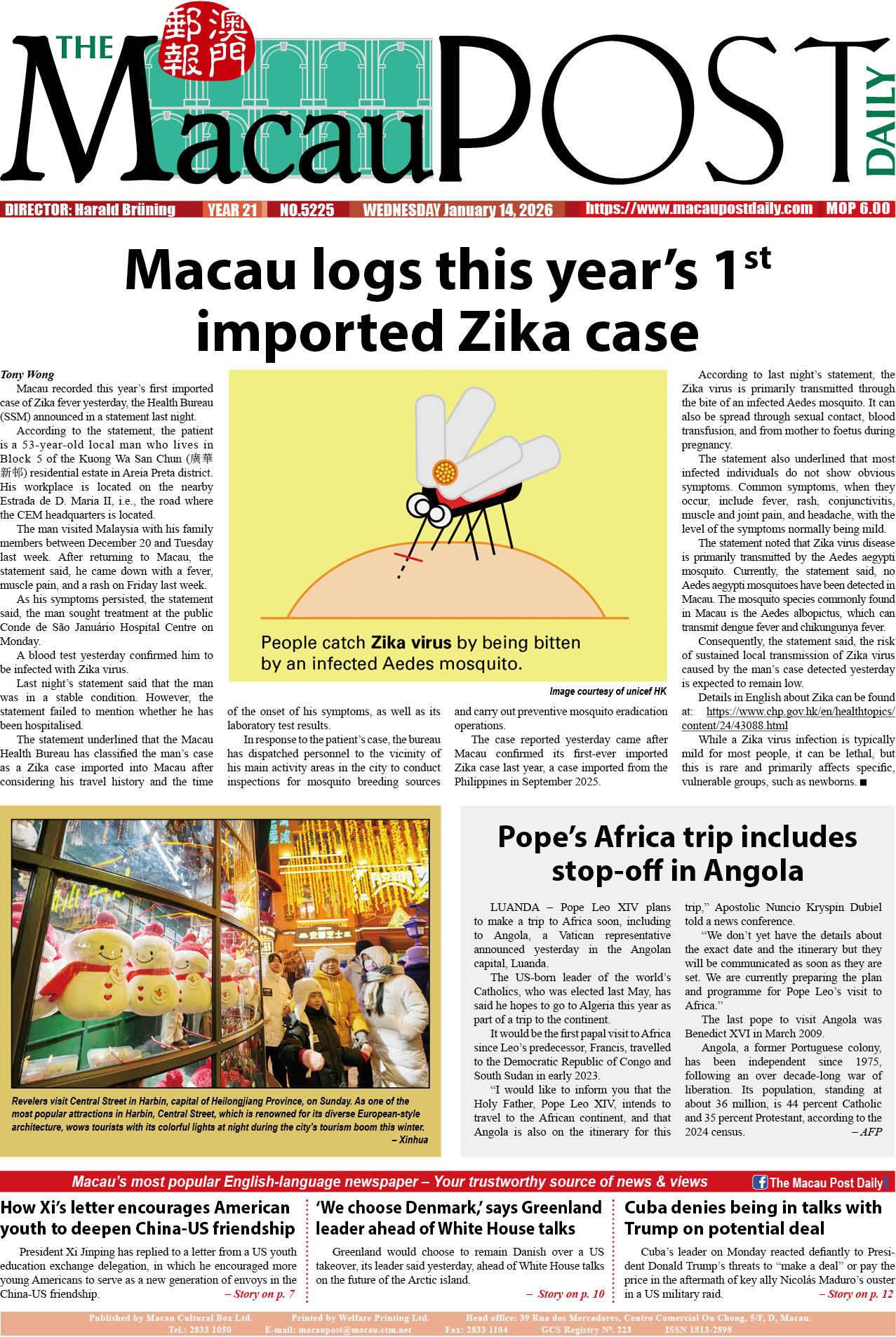The local art organisation, T Theatre, presented a performance titled “The Uncanny” (Chinese: 溪山清遠) at its venue in Nape on Saturday.
Established in 2016, T Theatre not only refers to the venue in Nape but also promotes various forms of choreography, aiming to explore diverse body practices across different media and backgrounds.
Prior to Saturday’s performance, Guo Rui, the co-creator, choreographer, and performer based in Guangzhou, spoke to the Post about the show. This marks the third time the Post* has featured Guo, with this interview focusing on his thought process as a choreographer.
Created in collaboration with local hip-hop dancer Popeye Hong (洪振宇), the choreography of “The Uncanny” uses the dancing body to explore identity.
Guo constantly questions the notion of identity from an artist’s perspective during the conceptualisation of dance. In dance, he noted, especially in Chinese folk and classical dance, which is his expertise, the individual identity is minimised, with everything devoted to the construction of the piece. “From every small movement to the expertise itself, the person is merely an executor of the dance parts,” he noted.
Together with Hong, Guo deconstructed hip-hop dance, Chinese folk and classical dance into a more contemporary form, where the dress and styles and the choreography remixed again giving new imagination and freedom for dancers to bring their own dance experiences and exchange ideas. “The two completely different genres of dance come together and crossover, defying stereotypes,” he said.
“A dance is always attached to its history, like hip-hop rising from African-American musical traditions, with lots of freedom and democratic values, and people from different backgrounds come together to exchange dance with each other,” Guo said, adding that if we detach these elements from the dance and isolate it, perhaps a new image or feelings will emerge as a result.
In a way, every dance system or genre exerts its influence or power to make us identify with a certain dance move. “For example, if we do a classic act in a ballet or classical dance, even under a very different context and with a completely different intention, people still interpret or relate it to that certain dance genre,” Guo explained. Contemporary art, for Guo, is the attempt to break from these preconceptions and give us the freedom or identity.
Under these new premises – stage settings, new interactions, and individual thought processes injected into the dance – Guo hoped to not only give freedom to the dancers to find their own identities outside strict dance genres but also allow the audience to arrive at different interpretations of the dance, or even at times find it unfathomable.
“Without a clear context provided by all the present dance genres, the audience can only interpret dance based on what is given by the performers,” Guo said, adding that “the different kinds of interpretations signify the freedom from pre-conceptualisation, giving authentic meaning and identity to us as individual performers to connect with the audience.”
By removing the constraints of established dance forms, Guo aims to liberate both dancers and viewers from preconceived notions, enabling a more personal exploration and experience of movement and expression. The ambiguity created space for unique perspectives unbounded by traditional contextual cues.
* https://www.macaupostdaily.com/article20384.html
https://www.macaupostdaily.com/article17068.html
– Interview by William Chan








“The Uncanny” dance performance held at T Theatre in Nape on Saturday. – Photos: Pekchi









